As pet parents, we often find ourselves sharing our meals with our furry companions, and bread is a staple food found in many houaseholds.
From sandwiches to toast, bread is a versatile carbohydrate enjoyed by humans worldwide. But can dogs safely indulge in this bakery favorite?
Let’s unravel the mysteries of bread and its suitability for our canine friends.
Contents Overview
What is Bread?
Bread is a staple food made from flour, water, yeast, and salt, typically baked into loaves. It’s a versatile food enjoyed worldwide in various forms, from crusty baguettes to soft sandwich bread.
With its comforting aroma and satisfying texture, bread complements meals, serves as a snack, and forms the basis of countless recipes.
Its history dates back thousands of years, evolving from simple flatbreads to the diverse array of breads we know today. Whether homemade or store-bought, bread remains a beloved part of many cultures and cuisines.
The Nutritional Value of Bread
Bread is primarily composed of carbohydrates and provides energy for both humans and dogs.
However, the nutritional value of bread can vary depending on the type and ingredients used in its preparation:
- Carbohydrates: Bread is a significant source of carbohydrates, which are essential for providing energy and supporting bodily functions in dogs.
- Fiber: Whole grain breads contain dietary fiber, which aids in digestion, regulates bowel movements, and promotes gastrointestinal health in dogs.
- Protein: Some types of bread may contain small amounts of protein, but it’s generally not a significant source compared to other protein-rich foods.
- Additives: Commercial breads may contain additives such as preservatives, flavorings, or sugar, which may not be suitable for dogs and should be avoided.
Can Dogs Safely Eat Bread?
Dogs can eat bread in moderation, but it’s not an essential part of their diet. Plain, unsalted bread in small amounts is generally safe for dogs to consume as an occasional treat.
However, bread should not replace their regular meals, as it lacks the essential nutrients dogs need.
Additionally, some dogs may have allergies or sensitivities to wheat or gluten, so it’s important to monitor their reaction when introducing bread into their diet.
Avoid feeding dogs bread with added ingredients like raisins, nuts, seeds, or spices, as these can be harmful to them.
Overall, while bread can be a safe and tasty snack for dogs, it should be given sparingly and as part of a balanced diet.
Potential Benefits of Bread to Dogs
Bread, a staple food for many, often finds its way onto our tables. But what about our furry friends?
Can dogs enjoy this common carbohydrate?
Let’s delve into the potential benefits of bread for our canine companions.
1. Digestive Health
- Soluble Fiber: Bread, particularly whole grain varieties, contains soluble fiber, aiding in digestion for dogs.
- Regularity: It can promote regular bowel movements, preventing constipation in some cases.
2. Energy Source
- Carbohydrates: Bread provides a quick source of energy due to its carbohydrate content.
- Active Dogs: This can be beneficial for highly active dogs needing an energy boost during activities.
3. Mental Stimulation
- Training Treats: Bread cubes can serve as enticing rewards during training sessions, keeping dogs mentally engaged.
- Enrichment: Stuffed bread toys can provide mental stimulation, reducing boredom and destructive behaviors.
4. Variety in Diet
- Palatability: Dogs may enjoy the taste and texture of bread, adding variety to their diet.
- Food Allergies: Bread can be a safe option for dogs with food allergies to other common treats.
5. Bonding
- Shared Experience: Sharing bread with your dog can strengthen the bond between pet and owner during meal times.
- Social Interaction: Offering bread to dogs can facilitate socialization with other pets and people.
6. Medical Use
- Medication Administration: Bread can be used to conceal medication, making it easier for dogs to swallow pills.
- Digestive Upset: Plain, unsalted bread may help soothe mild gastrointestinal upset in dogs.
7. Weight Management
- Low-Calorie Option: Plain, small portions of bread can be used as a low-calorie treat for dogs on weight management diets.
- Satiety: The fiber content in bread may help dogs feel fuller for longer, reducing overall calorie intake.
8. Emergency Food
- Backup Nutrition: In emergencies where dog food is unavailable, plain bread can serve as a temporary source of nutrition.
- Convenience: Bread is readily available and easy to store, making it a convenient option during emergencies.
9. Dental Health
- Chewing Action: Gnawing on bread can help remove plaque and tartar buildup from a dog’s teeth, promoting dental health.
- Gum Stimulation: The texture of bread can stimulate gum health, reducing the risk of periodontal disease.
Potential Risks of Feeding Bread to Dogs
While bread can offer some benefits to dogs, it’s essential to be aware of potential risks and take necessary precautions when incorporating it into their diet.
Let’s explore the potential downsides and precautions associated with feeding bread to our canine companions.
1. Digestive Upset:
- Gluten Sensitivity: Some dogs may have gluten sensitivities or intolerances, leading to digestive discomfort after consuming bread.
- Bloat Risk: Bread can expand in the stomach, potentially leading to bloating or gastric dilatation-volvulus (GDV), a life-threatening condition.
2. Nutritional Imbalance:
- Empty Calories: Bread lacks essential nutrients, and excessive consumption can lead to an imbalance in a dog’s diet.
- Obesity: Regularly feeding bread, especially high-calorie or flavored varieties, can contribute to weight gain and obesity in dogs.
3. Allergies:
- Wheat Allergy: Wheat, a common ingredient in bread, is a common allergen for dogs, leading to allergic reactions such as itching, skin irritation, and digestive issues.
- Ingredient Sensitivities: Dogs may also be allergic or sensitive to other ingredients found in bread, such as dairy or certain additives.
4. Dental Issues:
- Stickiness: Some types of bread, particularly soft or sweet varieties, can stick to a dog’s teeth, promoting plaque and tartar buildup.
- Choking Hazard: Large pieces of bread or chunks swallowed without adequate chewing can pose a choking risk, especially for small dogs or those prone to gulping food.
5. Digestive Blockages:
- Foreign Body Obstruction: Bread, when consumed in large quantities or without chewing properly, can form a mass in the digestive tract, leading to blockages that require surgical intervention.
- Risks of Ingesting Other Objects: Feeding bread with added ingredients like nuts or seeds increases the risk of gastrointestinal obstruction if these objects are accidentally ingested.
6. Blood Sugar Spikes:
- High Glycemic Index: Some types of bread, particularly those made with refined flour or containing added sugars, can cause rapid spikes in blood sugar levels in dogs.
- Diabetes Risk: Regular consumption of high-glycemic foods may contribute to insulin resistance and increase the risk of diabetes in susceptible dogs.
7. Interference with Medication:
- Delayed Absorption: Feeding bread alongside medications may delay their absorption in the digestive tract, reducing their effectiveness.
- Drug Interactions: Certain medications may interact with ingredients or additives commonly found in bread, leading to adverse effects or decreased efficacy.
8. Behavioral Issues:
- Food Aggression: Feeding bread from the table or as a treat without proper training can reinforce begging behavior and contribute to food aggression in dogs.
- Resource Guarding: Dogs may become possessive of bread or food items, leading to territorial behavior or conflicts with other pets or family members.
How to Safely Serve Bread to Your Dog
If you decide to share bread with your furry friend, here are some tips for doing so safely:
- Small Portions: Offer bread to your dog in small, bite-sized pieces to prevent overconsumption and ensure they tolerate it well.
- Choose Plain Varieties: Opt for plain, unsalted bread without any added ingredients or seasonings.
- Moderation is Key: Bread should be fed to dogs in moderation as an occasional treat rather than a regular part of their diet.
- Monitor for Reactions: After feeding your dog bread for the first time, monitor them closely for any signs of allergic reactions or digestive upset. If any adverse reactions occur, discontinue feeding bread and consult your veterinarian.
When to Avoid Bread to Dog
- Allergic Reactions: If your dog has known allergies or sensitivities to wheat or gluten.
- Digestive Issues: During periods of digestive upset, such as diarrhea or vomiting.
- Weight Management: If your dog is on a weight management diet, bread can contribute to calorie intake.
- Medication Administration: When administering medications that may interact with bread ingredients.
- Dental Health Concerns: If your dog has dental issues or is prone to plaque buildup.
- High-Sodium Diet: For dogs with sodium-sensitive health conditions, such as heart or kidney issues.
- Overindulgence: When your dog has already consumed other high-calorie treats or foods.
- Before Consultation: Before consulting with a veterinarian about your dog’s dietary needs or health concerns.
Safe and Suitable Alternatives of Bread for Dogs
Safe and suitable alternatives to bread for dogs include plain rice or oats, which are easily digestible and unlikely to cause allergic reactions.
Additionally, vegetables such as carrots, green beans, or cucumber slices can provide a low-calorie and nutritious option for dogs.
Lean meats like cooked chicken or turkey, without seasoning or bones, are also excellent alternatives, offering protein and essential nutrients.
Furthermore, commercially available dog treats specifically formulated for canine dietary needs can provide a convenient and balanced alternative to bread.
Always ensure that any alternative treats or foods are appropriate for your dog’s dietary requirements and consult with a veterinarian if you have any concerns.
Bottom Line
In conclusion, bread can be a safe and occasional treat for dogs when fed in moderation and with consideration for any dietary sensitivities or allergies.
While bread provides carbohydrates and energy, it should not replace balanced dog food formulated specifically for your pup’s nutritional needs.
With careful consideration and moderation, you can share a slice of bread with your beloved canine companion and enjoy the simple pleasure of breaking bread together.
So go ahead, offer a small piece of plain bread to your pup, and savor the joy of sharing a moment with your furry friend!


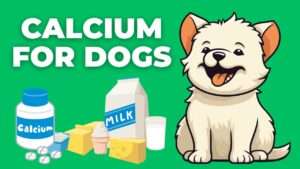





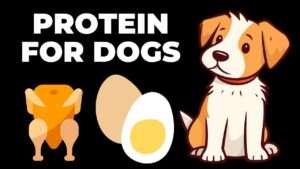

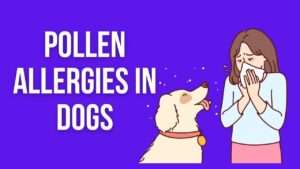

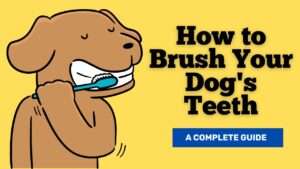

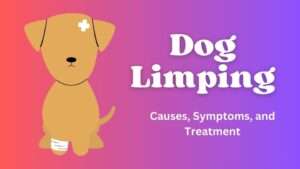
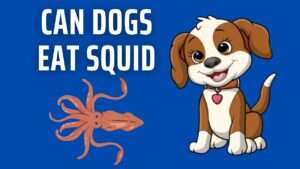




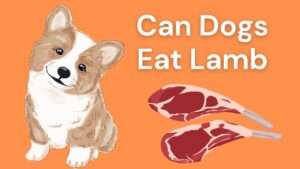


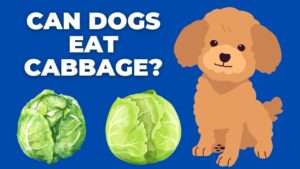

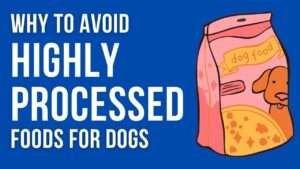

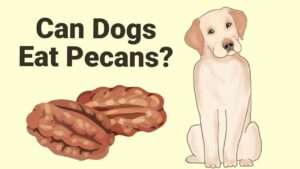







+ There are no comments
Add yours